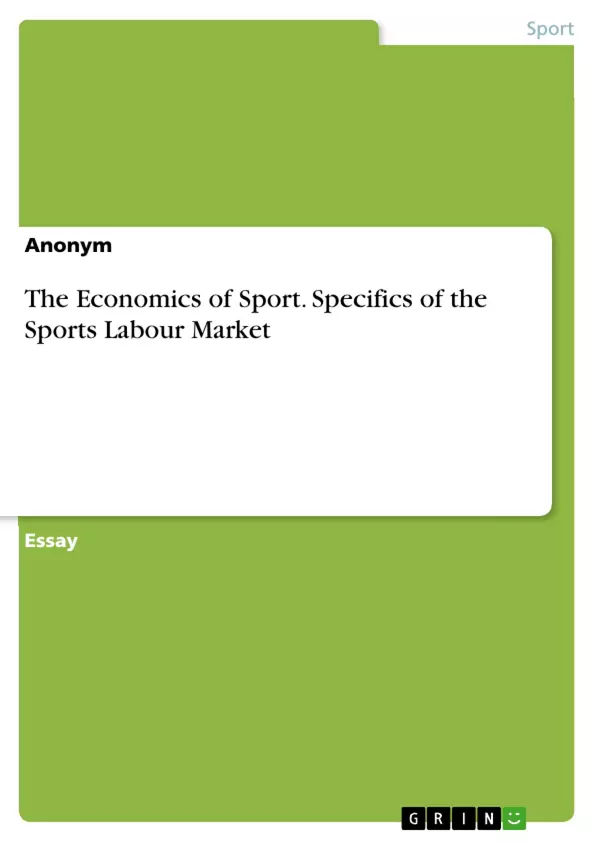It is commonly known that some top-athletes tend to earn disproportionately high salaries.
According to the Forbes list 'The world's highest-paid athletes' the best-paid athlete in 2015 is the boxer Maywheather with a total pay of about $300 million (Forbes, 2015). However, he is not the only athlete with an enormous wage. The high salaries are not only restricted to one or two types of sport. There are a significant number of different sports, such as tennis, basketball or golf with athletes earning enormous wages (Forbes, 2015). This shows that the trend of high salaries for top-athletes is not restricted to some exceptions; it is rather a general pattern in the world of sport.
This essay will identify the factors that justify these high salaries for top-athletes. It will explain the structure of the sports labor market. After that, the economics of superstars will be discussed and tournament theory will be considered. Additionally, real-world examples will be provided. The research includes secondary information from journal articles, books and websites.
Inhaltsverzeichnis (Table of Contents)
- Introduction
- The Sports Labor Market
- Monopoly Wage
- Labor Market Restrictions
- Economics of Superstars
- Rank-Order-Tournament-Theory
- Application
Zielsetzung und Themenschwerpunkte (Objectives and Key Themes)
This essay aims to identify the factors justifying the high salaries of top-athletes. The paper will explore the structure of the sports labor market, examine the economics of superstars, and analyze the rank-order tournament theory. Real-world examples will be used to illustrate these concepts.
- The structure of the sports labor market
- The economics of superstars
- The rank-order tournament theory
- The impact of labor market restrictions on athlete salaries
- The application of these theories to real-world examples
Zusammenfassung der Kapitel (Chapter Summaries)
The introduction establishes the context of high athlete salaries, highlighting the prevalence of this phenomenon across various sports. It outlines the essay's objectives and the research methods used.
The chapter on the sports labor market delves into the unique characteristics of this market, considering factors such as uncertainty about labor quality, teamwork, and the scarcity of star players. It explains how the interaction between leagues and players' unions can lead to wage negotiations and the potential for monopoly wages.
The chapter on the economics of superstars explores the concept of imperfect substitution among sellers, where top athletes are irreplaceable and can demand higher salaries. It also discusses scale economies in joint consumption, where athletes can reach a large audience at relatively low production costs.
The chapter on the rank-order tournament theory focuses on the incentives of athletes in non-team sports. It explains how promoters can influence athlete effort by adjusting prize levels and spreads between ranks. This theory helps to understand why top-ranked athletes in tournaments often earn significantly higher salaries.
Schlüsselwörter (Keywords)
The key concepts and themes explored in this essay include the sports labor market, the economics of superstars, rank-order tournament theory, player mobility restrictions, wage determination, and the relationship between athlete performance and compensation.
- Quote paper
- Anonym (Author), 2016, The Economics of Sport. Specifics of the Sports Labour Market, Munich, GRIN Verlag, https://www.grin.com/document/910234



